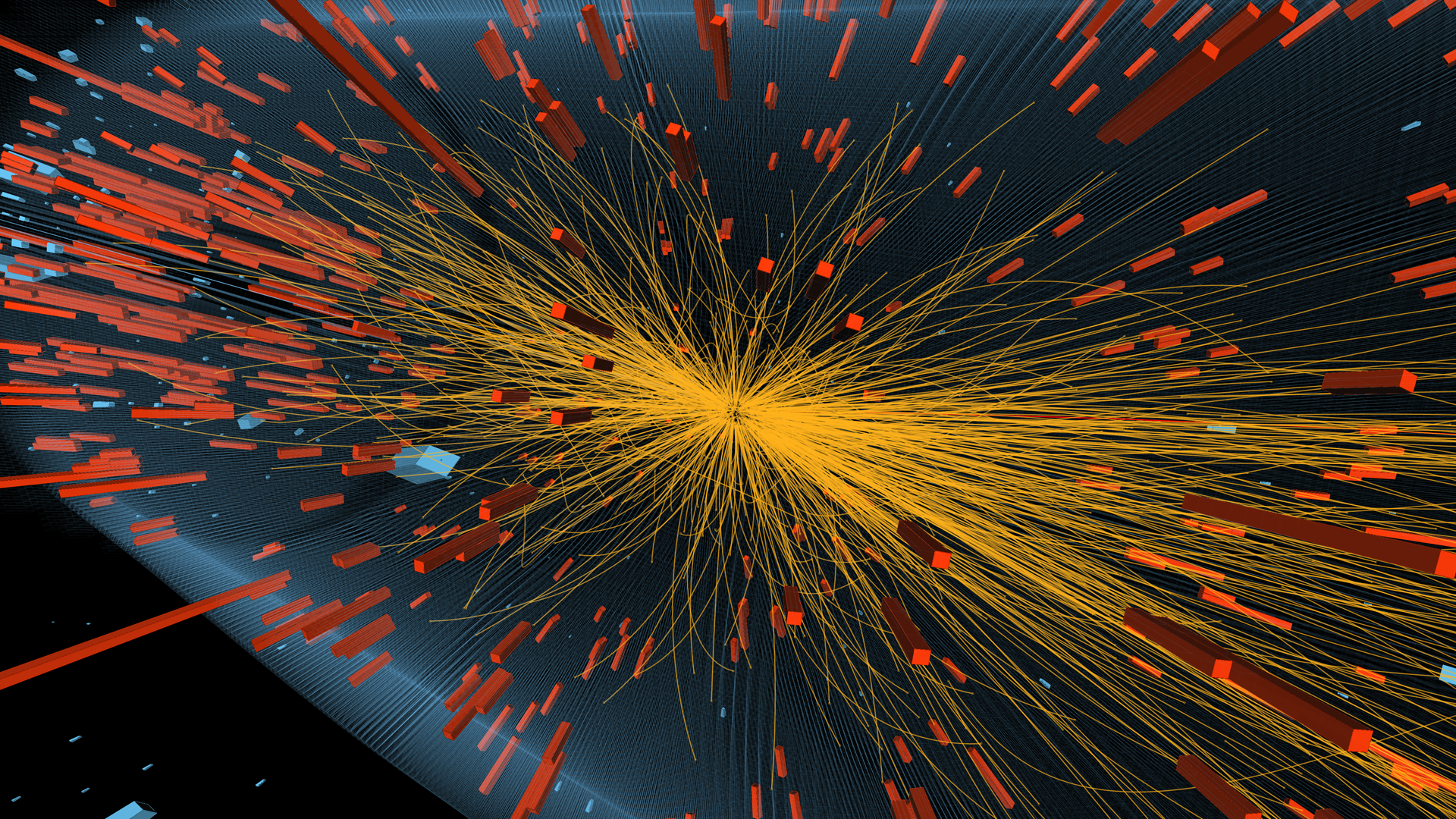
Observing a phenomenon for the first time helps us fine-tune our understanding of the Universe. CMS physicists found such a phenomenon in September 2012 in proton-lead collisions, an observation that has since been reinforced by much more data from such collisions collected in early 2013. What CMS has found might help us get a clearer picture of the earliest moments of the existence of our Universe.
The Large Hadron Collider conducted a short pilot run in September 2012, in which protons and lead nuclei were collided for the first time at centre-of-mass energies of 5.02 TeV. This pilot run set the stage for a longer, sustained run of proton-lead (pPb) collisions in early 2013 as part of the LHC’s heavy-ion programme. The new run yielded 30000 times more data compared to the pilot run and allowed CMS to explore rare events that only happen once in every 10 million proton-lead interactions. Of particular interest were collisions that produce a large number of particles (more than 50), since it was in these collisions that intriguing correlations were observed during the pilot run (reported in Phys. Lett. B 718 (2013) 795). CMS has submitted a new paper to Phys.Lett. B (arXiv:1305.0609), bringing important insights essential for unravelling the origin of these mysterious particle correlations.
This phenomenon is a correlation between pairs of particles that is enhanced at small relative azimuthal angle Δφ (see Image 3) over a wide range of rapidity separation (see Δη in Image 3), producing a ridge-like structure in data plots. The “ridge” was first observed in nucleus-nucleus collisions at the Relativistic Heavy Ion Collider and has a long history of competing theoretical explanations. Presently it is understood to be the consequence of the explosion of a “droplet” of quark-gluon plasma (QGP) in which thousands of particles “flow” in a correlated fashion almost without any internal friction. However, a ridge was also observed in proton-proton (pp) and proton-nucleus collisions, where a QGP-like matter was not expected to be formed. In systems like pp and pPb the initial collision zone is about an order of magnitude smaller in size than in the lead-lead (PbPb) system, and it is therefore difficult to reach a high-enough energy density required to melt colliding nucleons into a soup of quarks and gluons. Yet, in rare cases, when the pp and pPb collisions produce a huge number of particles, these particles appear to be correlated. The question is, do these correlations in pp and pPb collisions share a common physical origin as in PbPb interactions, are they caused by the internal gluon structure of the protons (as proposed by the “colour-glass condensate” model), or perhaps are they caused by both?
In the 2013 run, on some occasions as many as 420 charged particles were observed coming out of a single pPb collision in the CMS detector (see Image 1 for an event display of such a collision). This recorded data sample contained a relatively few, extraordinary cases where the multiplicity of particles produced is comparable to that in an average PbPb collision. And sure enough, the two-particle correlations also look very similar. Image 2 shows a direct comparison of two-particle correlations between PbPb and pPb collisions by selecting the same particle-multiplicity ranges.
The new data set also makes it possible to analyse the long-range correlations in greater detail. A technique similar to the approach used to study the cosmic microwave background (CMB) spectrum was deployed to investigate the correlations. For the CMB data analysis, microscopic temperature fluctuations reveal the primordial inhomogeneity in the Universe immediately after the big bang, which eventually gave rise to galaxies. In each lead-lead collision a different microcosm is produced with its own set of fluctuations of hot spots in the collision zone that then propagate as ripples which can be uncovered by the CMS detector.
Using the same technique to analyse high-multiplicity pPb collisions brings us a step closer to deciphering the origin of the long-range correlations in smaller systems. In probing the ridge, CMS discovered a remarkable similarity between the pPb and PbPb collision that produce the same number of particles in the final state. This observation provides more support to the conclusion that a “liquid” medium similar to those in PbPb collisions might also be produced in pPb ones. CMS has advanced the correlation analysis beyond using just pairs of particles. Instead quartets of particles are studied for how these might be moving in a correlated manner. Indeed, whenever there are more than 50 particles produced in a collision, CMS has found that there are distinctive four-particle correlations occurring. The 50-particle threshold corresponds to the multiplicity range where the ridge emerges in the pp, the pPb, and the PbPb collisions. These results provide further evidence of the collective nature of the effect and the similarity between different collisions systems.
Several key observables used to characterise nucleus-nucleus collisions are under investigation in the pPb system, in order to reach a consistent picture of the phenomena spanning various collisions systems.
— by Julia Velkovska and Wei Li
- Log in to post comments

